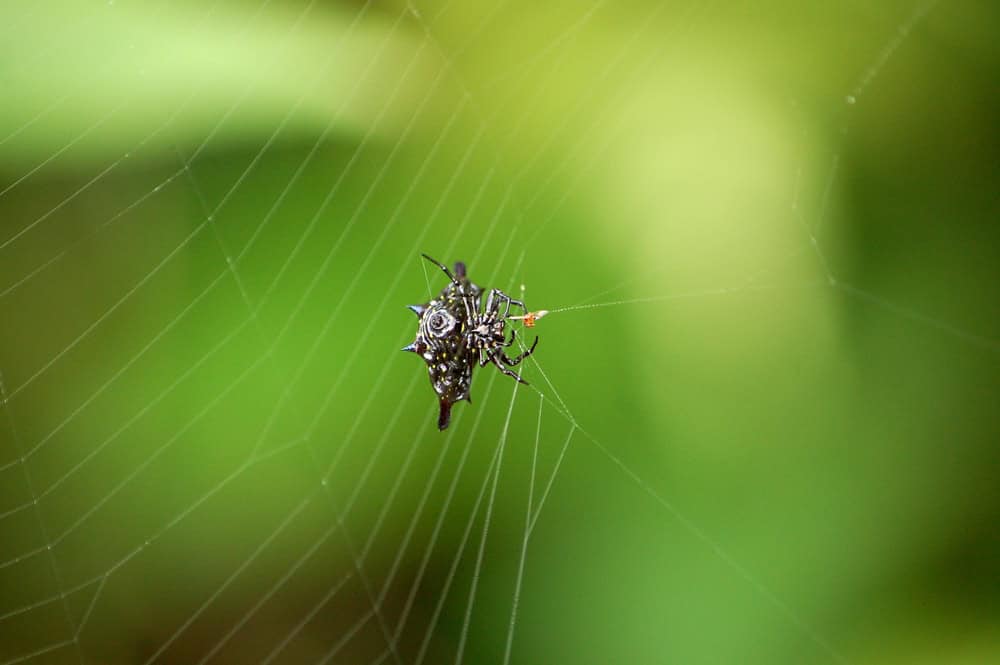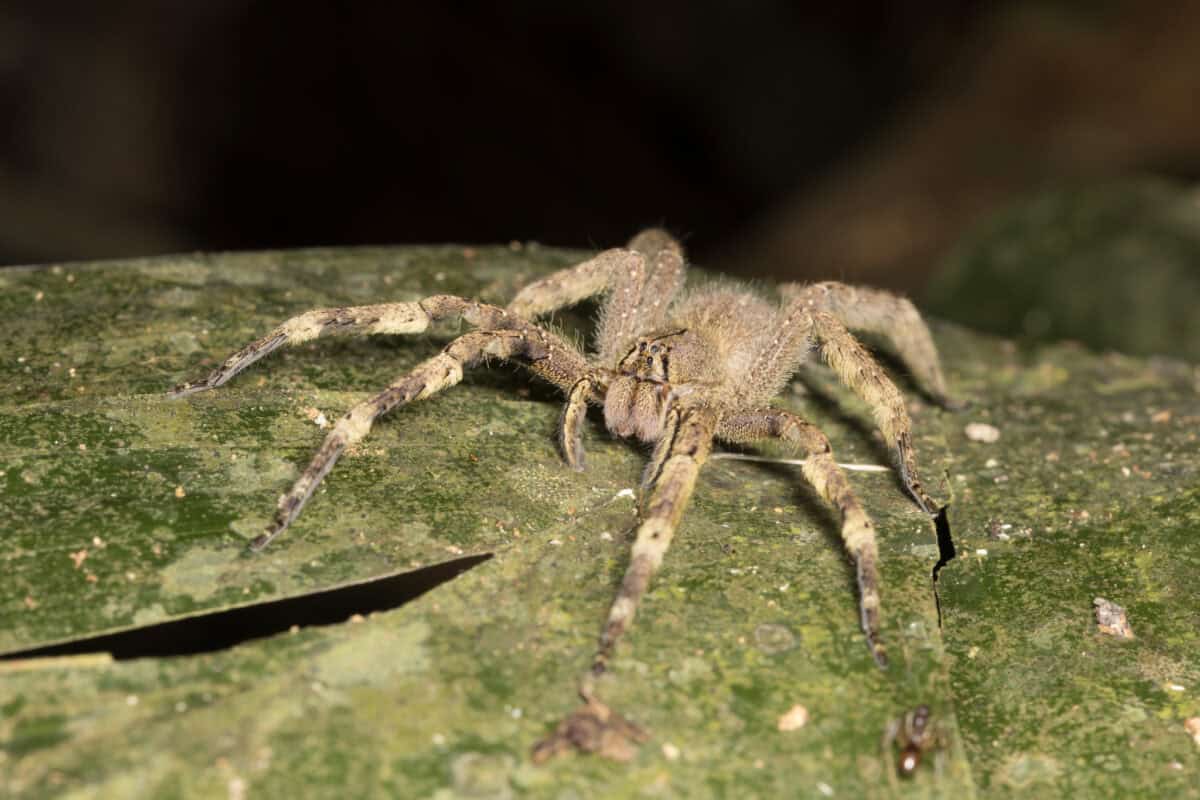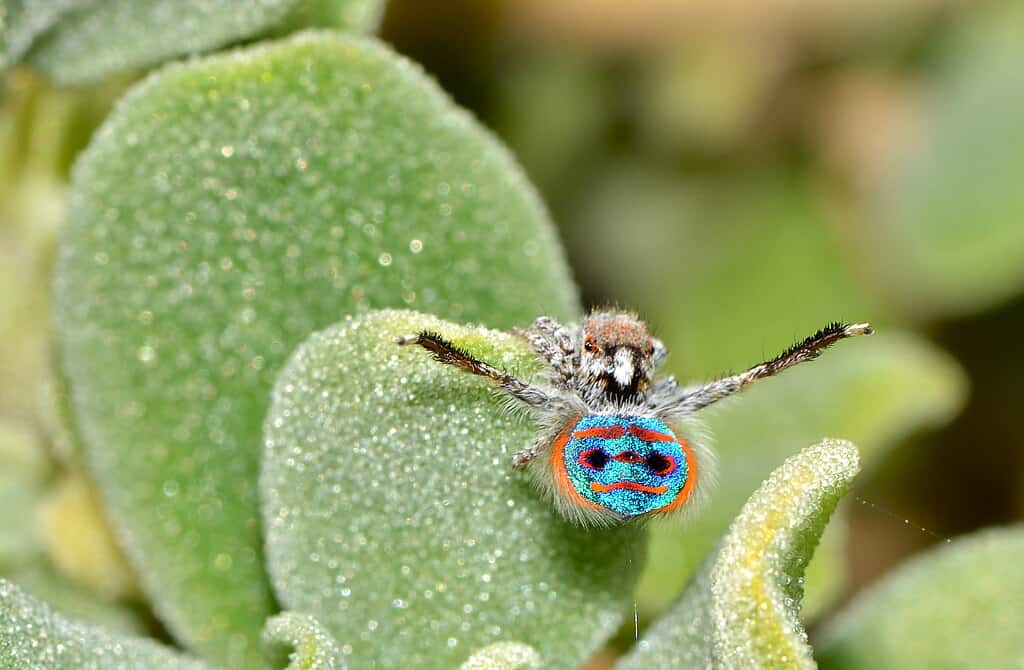Spiders are fascinating creatures, and among the approximately 45,000 known species, some stand out for their rarity and unique traits. Unlike the everyday encounter with a garden spider, these rare species boast remarkable adaptations and appearances, making them truly special members of the arachnid family. This article delves into twenty such species, each with its own captivating characteristics and natural histories.
Gooty Sapphire Ornamental (Poecilotheria metallica)

Found in a small forest reserve in Southern India, the Gooty Sapphire Ornamental is renowned for its stunning metallic blue sheen. This tarantula’s vibrant color is not just for show; it plays a role in communication and predator deterrence. These spiders prefer arboreal habitats, dwelling in tree holes and emerging at night to hunt.
Peacock Parachute Spider (Poecilotheria subfusca)

Native to Sri Lanka, the Peacock Parachute Spider is famed for its bold pattern that mirrors the alluring display of a peacock. This climber spends most of its life in trees, spinning intricate webbing in the rainforest canopy. The species is considered endangered due to habitat loss, making its preservation crucial.
Black Widow (Latrodectus mactans)

The infamous Black Widow is recognizable by its glossy black body and striking red hourglass marking. Despite their notoriety, these spiders are relatively shy and prefer quiet, sheltered locations. Females are venomous, but they only bite in self-defense. The toxin is potent, yet fatalities are rare with modern medical treatments.
Darwin’s Bark Spider (Caerostris darwini)

Known for weaving the largest webs in nature, Darwin’s Bark Spider is a master architect of the arachnid world. Found in Madagascar, these spiders create silk structures that span rivers and support their hunting strategy of catching airborne insects. Their silk is remarkably strong, touted as one of the toughest biological materials.
Ladybird Mimic Spider (Paraplectana duodecimmaculata)

Sporting a ladybird’s appearance with bright red and black spots, the Ladybird Mimic Spider employs mimicry as a defense mechanism. Found in Southeast Asia, this species relies on its disguise to deter predators. It mainly resides in leaf litter and feeds on small insects and other arthropods.
Brazilian Jewel Tarantula (Typhochlaena seladonia)

One of the most beautiful spiders, the Brazilian Jewel Tarantula, hails from the rainforests of Brazil. Its intricate patterning includes blues, greens, and reds, giving it a jewel-like appearance. This arboreal spider constructs silk retreats within tree bark, showcasing remarkable camouflage abilities.
Pelican Spider (Archaeidae)

The peculiar Pelican Spider, with its elongated “neck” and jaws, has an appearance reminiscent of its avian namesake. Residing mainly in Madagascar, these spiders are known for their specialized predatory technique, engaging in a stealthy dance to ambush unsuspecting spiders.
Ant-Mimicking Spider (Myrmarachne plataleoides)

This spider represents one of nature’s intriguing examples of mimicry, resembling an ant both in form and behavior. The Ant-Mimicking Spider uses this disguise to infiltrate ant colonies undetected. Found across Asia, it mimics ants to perfection, right down to their movements and societal roles.
Hummingbird Spider (Phrictus quinquenotatus)

Native to Central America, the Hummingbird Spider is named for its dazzling iridescence, reminiscent of a hummingbird’s plumage. This tarantula is nocturnal and relies on its colorful appearance for communication during dusk when it becomes active to hunt for insects and small vertebrates.
Gliding Spider (Selenopidae family)

Gliding Spiders have adapted to “fly” from tree to tree in the jungles of Southeast Asia. These spiders spread their legs to create an aerodynamic shape, enabling them to glide through the air. This remarkable adaptation aids in avoiding predators and moving between forest canopies.
Ornamental Baboon Spider (Pterinochilus murinus)

Known for its vivid orange coloring and defensive temperament, the Ornamental Baboon Spider is native to Africa’s woodlands and savannahs. Its distinctive coloration serves as a warning signal to predators. Despite its intimidating appearance, it prefers to retreat rather than confront threats.
Golden Silk Spider (Trichonephila clavipes)

Golden Silk Spiders are famous for spinning golden-colored webs in tropical environments. Found in the Americas, these webs can stretch across several meters and are known for their tensile strength. The spider’s silk’s color not only attracts potential mates but also serves to entrap unsuspecting prey.
Bolas Spider (Mastophora genus)

With a unique hunting technique mimicking a fishing line, Bolas Spiders lure male moths by mimicking pheromones and then capture them using a sticky silk ball. Oft-found in the Americas, this species exemplifies the diversity of predatory strategies within the spider world.
Mystaceus Paradoxus

Found in Israel, this spider is notable for its mystical appearance, thanks to its patterned fur resembling a strange alien creature. While little is known about its behavior, its distinct markings provide effective camouflage against predators and contribute to its survival in arid environments.
Jewel Wasp Spider (Argiope catenulata)

Decorated with a zigzag pattern on its web and an iridescent body, the Jewel Wasp Spider is a visual marvel. Found across Asia, its vibrant yellow and black coloring helps deter predators and attract prey, with its webbing serving the dual purpose of a trap and a communication tool.
Kamerun Paradox Spider (Gandanameno species)

This African spider is named for its mysterious traits and behaviors, being sparsely documented in scientific literature. Residing in caves and natural crevices, the Kamerun Paradox Spider exhibits cryptic coloring to blend seamlessly with its surroundings, avoiding detection by predators and prey alike.
Algerian Whip Spider (Damon variegatus)

Despite its affectionately misleading name, the Algerian Whip Spider is a non-aggressive arachnid with an intimidating appearance. Its whip-like appendages are used to sense its environment in dark caves and crevices, highlighting its adaptability to subterranean life.
Sydney Funnel-Web Spider (Atrax robustus)

Regarded as one of the most venomous spiders, the Sydney Funnel-Web is known for its aggressive defense strategy. Native to Australia, its web is a masterpiece of funnel design, providing a controlled environment where the spider can ambush passing insects. Human encounters with its venom require immediate medical intervention for effective treatment.
Scorpion-Tailed Spider (Arachnura higginsi)

Found in Australia, the Scorpion-Tailed Spider has a body structure that comically mimics a scorpion. This mimicry acts as a deterrent to predators, liberating the spider to prey on insects without interference. Its web is irregular, hastily constructed to match the speedy lifestyle it maintains.
Six-Eyed Sand Spider (Sicarius hahni)

Residing in the deserts of Southern Africa, the Six-Eyed Sand Spider is a master of disguise. Buried beneath sand with only its eyes exposed, this spider lies in wait for prey. Its venom boasts a necrotic component potent enough to deter even the hardiest of attackers.
Conclusion

In conclusion, spiders capture our interest with their diversity and unique traits. Each rare species offers a glimpse into the vast array of adaptations that allow them to thrive in their respective environments. From dazzling colors to architectural web designs, these arachnids are not merely creatures of nightmares but rather remarkable examples of nature’s ingenuity, deserving our respect and admiration.
- 11 Signs Your Horse Might Be Bored - August 9, 2025
- Jurassic World Dominion Dinosaurs - August 9, 2025
- 11 Signs a Rhino Is About to Charge - August 9, 2025

